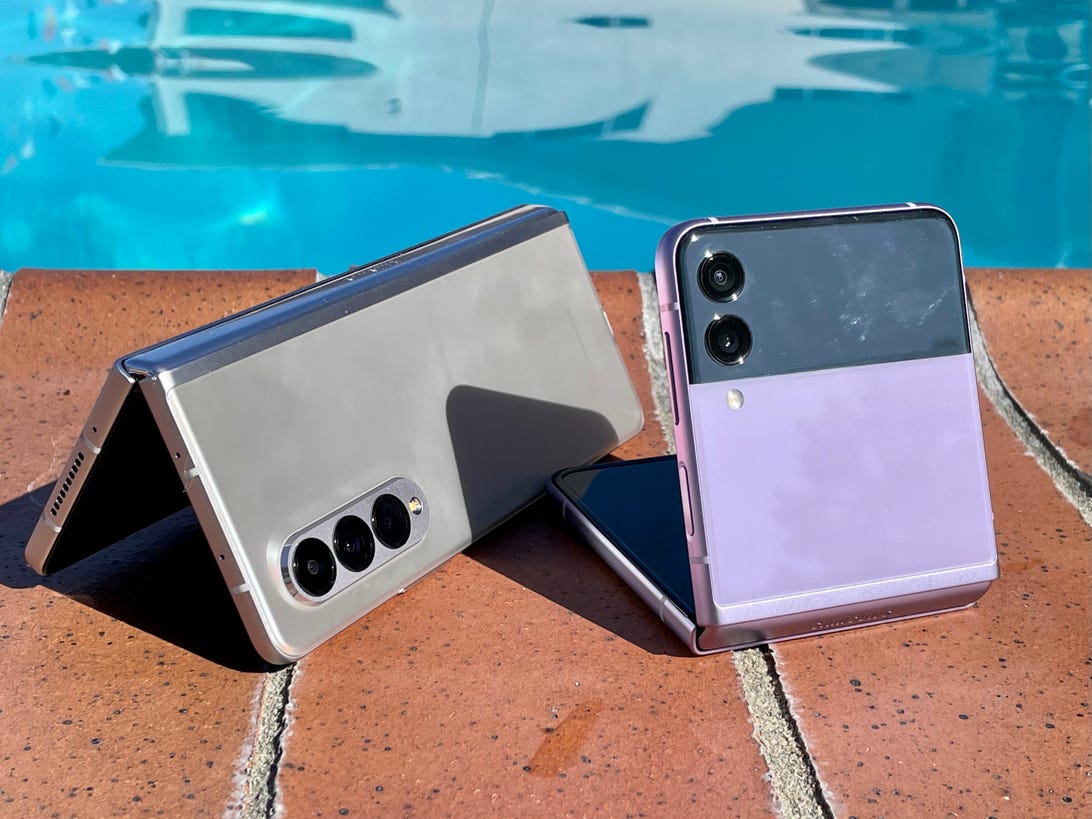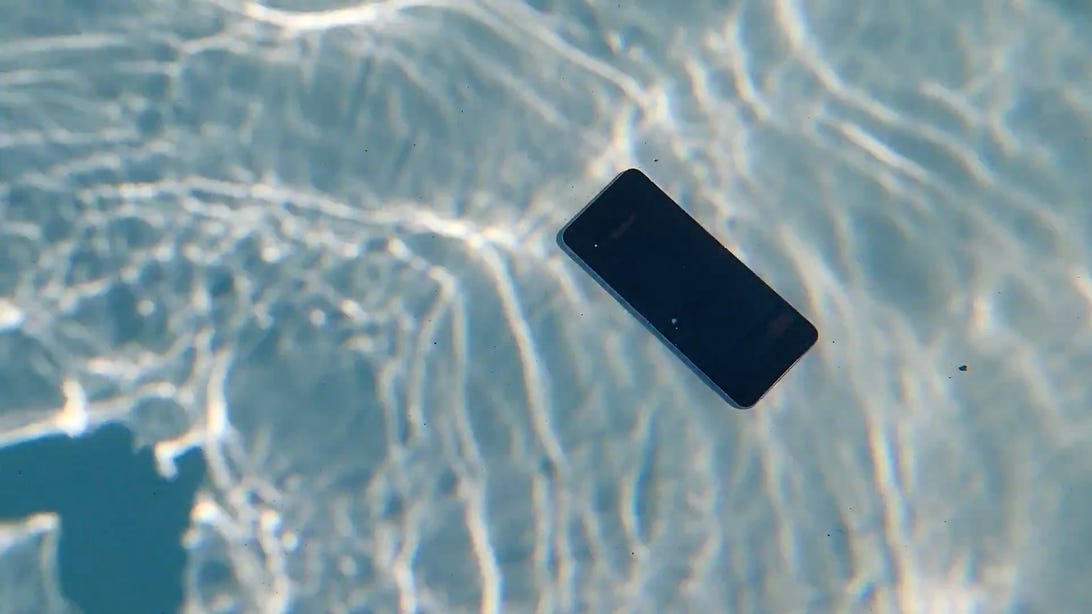The Galaxy Z Fold 3 and Z Flip 3 are the first Samsung foldable phones to feature water resistance, so they should be totally fine to use in the rain, next to the kitchen sink or while in the bathroom. Even though they have different designs, these phones share the same IPX8 water-resistance rating: up to 5 feet (1.5 meters) of water for up to 30 minutes, according to Samsung’s specifications. So we wanted to see what would happen in our own water experiments. As it happens, these phones can take a lot more water than their official rating.
Water resistance on phones is nothing new and we’ve tested it to extremes before. But foldable phones have more moving parts, like a hinge, so it’s an entirely different design challenge to keep watertight.
The Z Fold 3 and Z Flip 3’s internal components have a water-resistant coating, while the hinge has an anticorrosive solution and lubricant to help prevent rust. More intriguing is how Samsung made each half of this phone able to take a swim.
“To do this, we punched a hole in the interior so that water would flow into the device,” said Jongmin Kang, who works in Samsung’s product mechanical R&D group in a Korean-language video translated into English. “We blocked the hole with rubber on the side of the device and filled up the open spaces with a liquid solution we newly developed.”
Watch the video on this page for the full test and read on for the results.

Lexy Savvides/CNET
Testing the Z Fold 3 and Z Flip 3 water resistance claim (5 feet)
For the first dunk, I want to specifically test the claim for each phone: 5 feet of fresh water for up to 30 minutes. Using a specially-designed tube to accommodate the width of the Z Fold 3, I measure out the 5-foot mark and fill the tube with water. Then, I start a timer and lower the Z Fold 3 down to the bottom.
A few bubbles rose up from the phone, and I noticed the app switcher open up on the screen, presumably a result of the water registering as a touch. It didn’t affect the timer’s progress, making for a fairly uneventful 30 minutes until I pulled the phone back out again.


The Z Fold 3 in our specially-designed clear tube.
Lexy Savvides/CNET
Rinse and repeat with the Z Flip 3 under the same conditions.
After dunking both of the phones and drying them off with a towel, I ran through a series of checks to see if everything was working as expected. The Z Flip 3 displayed a notification that there was water in the charging port, so I wasn’t about to plug a power cord in to check if it would take a charge just yet. Here are the results:
- Camera lenses were clear with no signs of water ingress; cameras worked as normal.
- Inside and outside screens responded to touches.
- Fingerprint scanner read my thumbprint correctly.
- Speakers had some water remaining in them, so droplets emerged when playing back music at high volume.
- Microphones recorded as normal.
Checking the phones after drying out
I wanted to make sure the phones had a chance to completely dry out before making a final assessment. So after 48 hours, I ran through all the checks again:
- All camera lenses were clear with no signs of water ingress.
- Both phones took a charge via USB-C.
- Inside and outside screens worked as expected.
- Fingerprint scanner read my thumbprint correctly.
- Speakers sounded fine when playing back music.
- Microphones recorded audio, sounded the same as it did before dunking.
With no visible external water damage, both phones looked brand new and the same as when I took them out of the box two days earlier.
Taking the Z Fold 3 and Z Flip 3 even deeper (10 feet)
Samsung’s water-resistance claim specifies fresh water, but in the real world you might want to use your phone beyond the bathtub. Seeing as they had passed the claim with flying colors, I took both phones to a pool to see how they would cope with chlorinated water — just for fun.
After capturing some cool underwater footage with the phones, I dove down to 10 feet and left the phones on the bottom of the pool to see what would happen. This time I left them for 15 minutes each.


The Z Flip 3 in a pool
Lexy Savvides/CNET
When the time had elapsed, I pulled the phones out, rinsed them in fresh water and tested again to see if they were still functioning. Here are the results:
- Camera lenses were clear with no signs of water ingress.
- Inside and outside screens worked as expected.
- Fingerprint scanner read my thumbprint on Z Flip 3, but it didn’t on the Z Fold 3.
- Speakers sounded muffled and waterlogged when playing back music on both.
- Microphones recorded audio.
Both phones displayed the water notification in the notifications shade, so I waited 24 hours for them to fully dry out before charging.
As expected, they both still charge over USB-C. I used the tool at fixmyspeakers.com to eject as much water as possible from the speakers — turns out there was quite a bit left in there. The maximum volume level returned to normal on both phones, but music didn’t sound as clear on the Z Fold 3 as it did before being dunked. The fingerprint reader still gave an error message on the Fold to read my thumbprint, but the button still physically worked to turn on the screen, wake up Bixby or launch the camera.
Are the Galaxy Z Fold 3 and Z Flip 3 waterproof?
As with all our experiments, this is not a scientific test of the water-resistance capabilities of the Galaxy Z phones and it doesn’t guarantee you’ll get the same results if you dunk your phone in water. But hopefully it gives you some peace of mind that if either of these phones take an accidental swim, they should be fine.
The real test will be long-term durability, so I’ll update this article if anything changes in the coming weeks or months with the Z Fold 3 and Z Flip 3.



